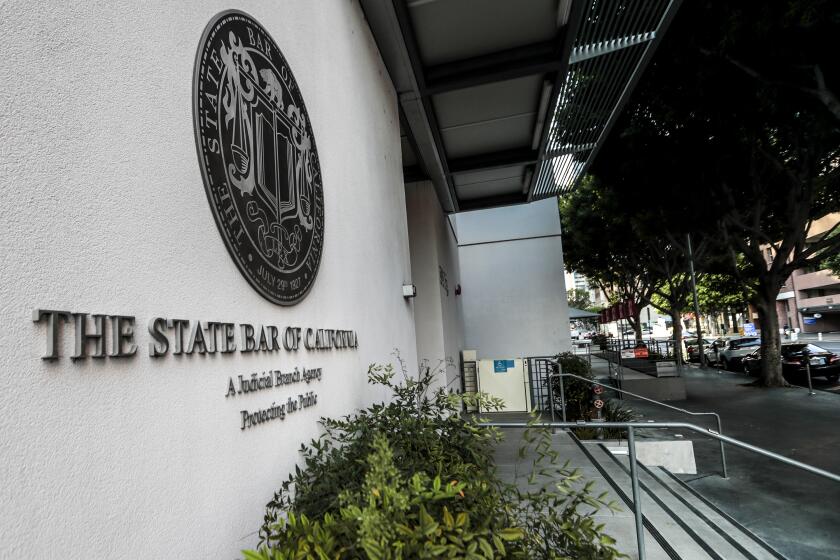Toxic Coolant Spills Into Conejo Creek
- Share via
THOUSAND OAKS — As much as 36,000 gallons of toxic coolant and water gushed out of the Rockwell Science Center and into Conejo Creek on Christmas night, prompting state and local environmental investigations that are still going on this week.
Human and mechanical failure in the center’s air-conditioning system apparently caused the mixture of water and ethylene glycol--a chemical similar to auto antifreeze--to spill onto the floor of the scientific research center and into the environmentally sensitive Conejo Creek in less than 30 minutes, officials said.
“Right now, we’re investigating everything that led to the spill,” said Hector Orozco, a warden for the California Fish and Game Department. “I’ve taken samples of the product itself. They’re in the lab now.”
The spill exposed animals in and alongside the 20-foot-wide creek to a 30% solution of ethylene glycol, but the effects may not be known for some time.
“It’s a large spill, so we’re concerned about it,” Orozco said. The spill could affect “everything from the ducks that are in it at Mugu Lagoon, and any animal that drank it along the stream bed. That can run from raccoons to deer--whatever.”
Orozco said the fast-moving stream probably diluted the chemical before it hurt any animals. But investigators will not be sure until the lab results are ready next week, he said.
Rockwell notified Ventura County officials hours after the spill, but county and Thousand Oaks officials did not release information on the incident until questioned about it Thursday.
Rockwell contractors have cleaned up the chemical from around the Science Center on Camino Dos Rios, said Terry Francisco, a Rockwell spokesman.
*
The coolant that flowed into Conejo Creek “was diluted by the normal water flow and rain showers,” he said. “It is unlikely that the spill could pose a risk to the local water supply. We feel that it was substantially diluted by the creek.”
However, Thousand Oaks is considering fines against Rockwell because some of the coolant spilled from drains in the research center’s floor into the city sewage system.
Microorganisms in the Hill Canyon waste-water treatment plant were able to break down the ethylene glycol into harmless chemicals before it flowed through to the ocean, said JoAnne Kelly, who oversees water quality for Thousand Oaks.
“But the city has issued [Rockwell] a notice of violation,” because the spill violated both city codes and Rockwell’s permit to discharge waste water from the site on Camino Dos Rios, she said.
Rockwell’s Terry Francisco was tight-lipped about what led to the spill, but Bob Hartley, a county environmental health specialist, said that Rockwell officials described the accident this way:
A Rockwell contractor started doing maintenance work on the building’s air-conditioning system several days before Christmas. The work involved opening a manual valve and removing some inspection plates from the complicated cooling system.
*
The system contains coolant fluid, along with small, floating containers of deionized water, one of which stuck in the valve and prevented it from being closed properly when the maintenance work was done, Hartley said.
At the same time, a tankful of nitrogen gas that keeps another valve shut began running low.
An internal alarm system automatically telephoned the gas company that usually refills the nitrogen tank, but Rockwell had since changed gas companies, so the system dialed the wrong company, Hartley said.
That tank eventually ran out, and the valve failed at about 11:40 p.m. on Christmas night. This allowed the coolant to flow out through the manual valve, then through the nitrogen-controlled valve, and finally out through the holes left when the contractor failed to bolt the inspection plates back into place, Hartley said.
About 36,000 gallons of coolant fluid gushed out of the system in 20 to 30 minutes, and into the drains and nearby Conejo Creek, said Rockwell’s Francisco.
The pressure drop then sent out an alarm to Rockwell security, who notified county environmental inspectors several hours later, Hartley said.
More to Read
Sign up for Essential California
The most important California stories and recommendations in your inbox every morning.
You may occasionally receive promotional content from the Los Angeles Times.










